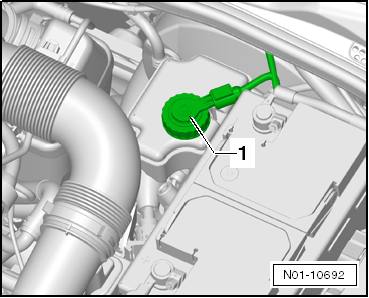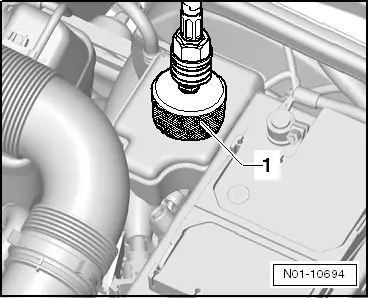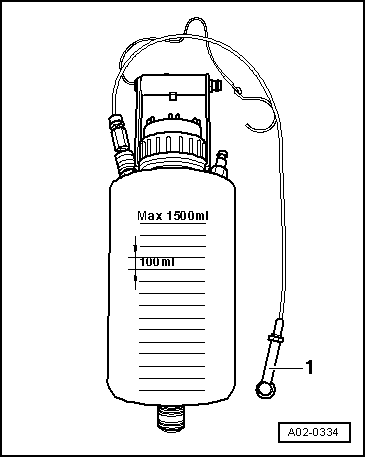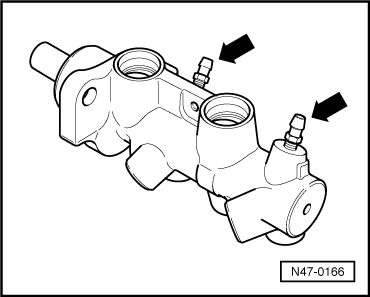| Bleeding brake system with brake filling and bleeding device for vehicles with Mark 20 |
| Special tools and workshop equipment required |
| t
| Brake filling and bleeding device, e. g. -VAS 5234- |
| t
| Vehicle system tester -V.A.G 1552- with diagnostic cable -V.A.G 1551/3, 3A, 3B oder 3C- or diagnostic unit VAS (only vehicles with ABS/EDL) |
| If one chamber of the brake fluid reservoir has run completely dry, e.g. leakage in the brake system, bleeding must be carried out using the brake filling and bleeding device, e.g. -VAS 5234-. Then the hydraulic unit is tested with the vehicle system tester -V.A.G 1552- in the function "basic setting" or with the vehicle diagnosis, measurement and information system -VAS-. |
| Opening the bleeder screws on the hydraulic unit is not allowed on vehicles with ABS, ABS/EDL! |

WARNING | t
| Brake fluid is hygroscopic, i.e. it retains humidity from the ambient air, and must therefore always be stored in airtight containers. |
| t
| Brake fluid must never come into contact with fluids containing mineral oils (oil, petrol, cleaning agent). Mineral oils damage the plugs and boots of the brake system. |
| t
| Drained (used) brake fluid must never be used again. |
| t
| Brake fluid is toxic, avoid skin contact. |
| t
| Because of its caustic effect brake fluid must not come into contact with paint. |
| t
| Rinse any brake fluid spills with a lot of water. |
| t
| Dispose of brake fluid in compliance with the applicable waste disposal and environmental regulations. |
| t
| Bleed the brake system on vehicles with ABS or ABS/EDL, as for vehicles without ABS. |
| t
| Only use new brake fluid in accordance with the specification → Chapter. |
|
| A pre-pressure of 0,1 MPa (1 bar) is required to bleed the brake system. |

DANGER! | t
| When replenishing brake fluid with a brake filling and bleeding device, it is important to ensure that the filling pressure of 0.1 MPa (1 bar) is not exceeded. |
| t
| If the filling pressure of 0.1 MPa (1 bar) is exceeded, proper bleeding of the hydraulic unit is no longer assured. |
|
|
|
|


 Note
Note



 Note
Note
